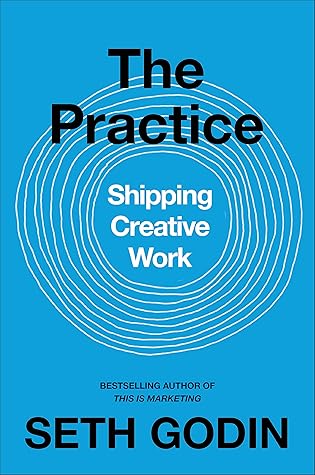More on this book
Community
Kindle Notes & Highlights
When we do the work for the audience, we open the door to giving up our attachment to how the audience will receive the work.
No one owes us anything.
If we choose to do work for generous reasons, and not for reciprocity or a long con but simply because we can, we stop believing that we are owed by others.
believing we’re owed gratitude is a trap.
The feeling of being owed (whether it’s true or not) is toxic.
Art is the human act of doing something that might not work and causing change to happen.
Asking why teaches you to see how things got to be the way they are.
each why can be followed by another, until you reach the foundational first principles of the work.
forces you to truly look at something. And that’s not only brave, it’s generous.
We can’t know the recipe because there isn’t a recipe:
recipes are always outcome dependent.
If we failed, would it be worth the journey? Do you trust yourself enough to commit to engaging with a project regardless of the chances of success?
life in art, to explore the penumbra,
How can any of us be certain?
And yet, how can anyone who cares hold back?
It’s selfish to hold back when there’s a chance you have something to offer.
If the problem can be solved, why worry? And if the problem can’t be solved, then worrying will do you no good. SHANTIDEVA
time we spend worrying is actually time we’re spending trying to control something that is out of our control.
Time invested in something that is within our control is called work.
There’s no promise that the world cares about your mission.
The industrial system has trained us to avoid the hook.
For some of us, though, on the hook is the best place to be. It’s on you. It’s on me. Our choice, our turn, our responsibility.
This is our practice.
Everything that matters is a skill and an attitude. Everything that matters is something we can learn.
The practice is choice plus skill plus attitude.
Skill is earned. It’s learned and practiced and hard-won.
Skill is rarer than talent. Skill is earned. Skill is available to anyone who cares enough.
The difficult part is becoming the kind of person who goes to the gym every day.
Focus only on the results, become a hack.
The professional understands the fine line between showing up with a generous vision and showing up trying to control the outcome.
“You can stay the same and protect the formula that gave you your initial success. They’re going to crucify you for staying the same. If you change, they’re going to crucify you for changing. But staying the same is boring. And change is interesting. So of the two options,” she concluded cheerfully, “I’d rather be crucified for changing.”
Leaders make art and artists lead.
Money supports our commitment to the practice. Money permits us to turn professional, to focus our energy and our time on the work, creating more impact and more connection,
The person who has paid for your scarce time and scarce output is more likely to value it, to share it, and to take it seriously.
If you’re leading, you’re searching for enrollment. For people who say “I see you and trust you and want to go where you are going.”
if we’re fortunate, we will find the people who are ready to go on our journey.
Those people will eagerly pay, because what we offer them is scarce and precious.
Better clients demand better work. Better clients want you to push the envelope, win awards, and challenge their expectations.
Better clients pay on time. Better clients talk about you and your work.
What I helped these musicians understand is that going from town to town and working with easy gigs was wasting their effort and hiding their art. What they needed to do was stay in one town, earn fans, play again, earn fans, move to a better venue, and do it again. And again.
the commitment to be a great architect also requires the professionalism to do the hard work of getting better clients.
You earn better clients by becoming the sort of professional that better clients want.
What change do you seek to make?
if you care enough to make change, it helps to be clear about the change you seek to make.
Who are you trying to change?
How will you know if it worked?
If it’s worth doing, it’s worth establishing why we’re doing it. And once we establish why we’re doing it, we’re on the hook to keep our commitment.
We seek to create a change for the people we serve.
Choose who it’s for and what it’s for. And the more different the person you serve is from you, the more empathy you’ll need to create the change you seek to make.
They herd ten cattle, and those cattle influence fifty cattle and those cattle influence the rest.


